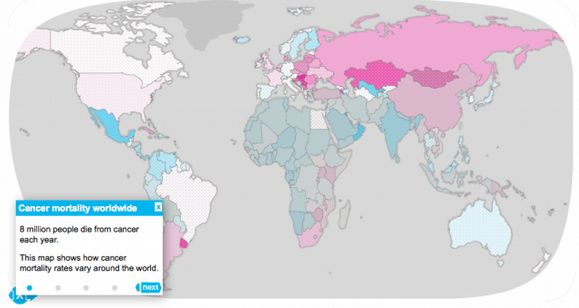
Newsroom Math Crib Sheet
By Prof. Steve Doig, Arizona State University
To convert a fraction into a decimal:
- Divide the top number by the bottom number
- Examples: 5/8 = 0.625 17/64 = 0.265…
To convert a decimal into a percentage:
- Multiply by 100 (or simply move the decimal two places to the RIGHT)
- Examples: 0.658 = 65.8% 1.255 = 125.5%
To turn a percentage into a decimal:
- Divide by 100 (or simply move the decimal two places to the LEFT)
- Examples: 43.7% = 0.437 148.2% = 1.482
To get X % of Y:
- Turn X % into a decimal, then multiply it by Y
- Example: 20 % of 90 = 0.20 * 90 = 18 130.5% of 45 = 1.305 * 45 = 58.7…
To compare X and Y using percentages (X is what percent of Y?):
- X is (X/Y * 100) percent of Y
- Example: 5 and 8: 5/8 = .625 = 62.5%, so 5 is 62.5% of 8
- Example: 8 and 5: 8/5 = 1.6 = 160%, so 8 is 160% of 5
To compare X and Y using percentage differences:
- X is ((X/Y –1) * 100) MORE/LESS than Y
- Use MORE THAN if the answer is positive, and LESS THAN if it’s negative
- Example: 5 and 8: 5/8 –1 = .625 – 1 = -0.375 = -37.5%, so 5 is 37.5% less than 8
- Example: 8 and 5: 8/5 –1 = 1.6 – 1 = .6 = 60%, so 8 is 60% more than 5
To compare a NEW number with an OLD number using percentage change:
- NEW has increased/decreased ((NEW/OLD –1) * 100) percent since OLD
- Use INCREASED if the answer is positive, and DECREASED if it’s negative
- Example: This year’s $8 million budget is a 60% increase over last year’s $5 million budget.
- Example: This year’s $5 million budget is a 37.5% decrease from last year’s $8 million budget.
To calculate rates (the number of events per some standard unit):
- Do this to account for different size populations
- RATE = (EVENTS / POPULATION ) * (“PER” Unit)
- Example Problem: If there were 320 murders in a population of 1,937,086, what is the murder rate per 100,000?
- First, divide the 320 murders by 1937086 = 0.0001652…
- Now multiply 0.0001652… by 100,000 = 16.5 murders per 100,000 population
To calculate the effect of inflation using the Consumer Price Index (CPI):
Price Now CPI Now
————– = ————
Price Then CPI Then
- With this formula, all you need is any three of the numbers to calculate the fourth.
- Example: CPI now = 213.2; CPI in 1965 was 30.8; price of gas in 1965 was $0.30 per gallon.
X / 0.30 =213.2 / 30.8
X = (213.2 / 30.8) * 0.30 = 6.92 * 0.30 = gas in 1965 cost the equivalent of $2.08 per gallon
Newsroom statistics:
- Mean (average): Add the numbers, then divide by how many numbers there are
- Median: Sort the numbers in order, then find the middle value
- Sampling error margin: 1/√N (example: sample of 625: 1/√625 = 1/25 = 0.04 = +/- 4 points)
Crowd estimating:
- Calculate area in square feet (length X width)
- Divide by 10 for a loose crowd (people are at arm’s length)
- Divide by 7.5 for a tight crowd (people are more shoulder to shoulder)
pdf ke stažení zde: Newsroom-Math-Crib-Sheet-Steve-Doig






